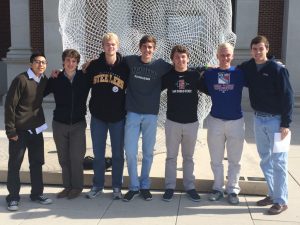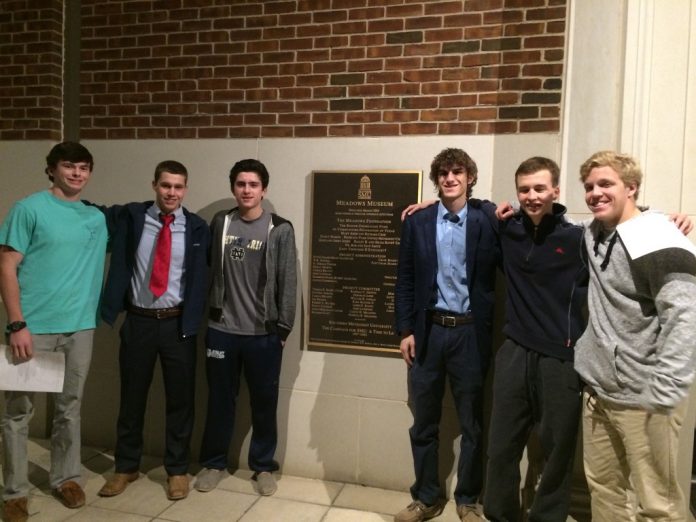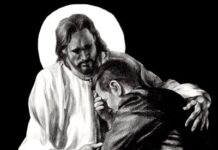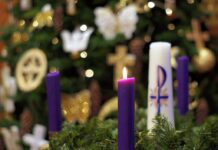 Thursday, November 19 and Saturday, November 21. Remember those dates, for what occurred on those days has only been documented in Dallas Jesuit history on three separate occasions.
Thursday, November 19 and Saturday, November 21. Remember those dates, for what occurred on those days has only been documented in Dallas Jesuit history on three separate occasions.
Two weeks ago, a total of thirteen Dallas Jesuit students basked in the halls of Southern Methodist University’s (SMU) Meadows Museum, indulging and learning about multiple pieces from the museum’s art gallery. This extraordinary experience acted as a capstone for a senior theology class called History of the Catholic Church, a single semester course that immerses students into an impressive timeline, explaining the origins and future developments of the Church.
Artists such as Jusepe de Ribera, Francisco de Goya, Juan Bautista Maino, El Greco, as well as treasures from the House of Alba were on display at the Meadows Museum, providing Jesuit students with an in-depth view of Spanish reenactments of monumental people, places, and relics in the Catholic Church’s history.
The House of Alba de Tormes, the highlight of the exhibit, refers to a prominent Spanish aristocratic family dating back to the 12th century. Over the years, the affluent dynasty has collected priceless pieces of Spanish art, furniture, and historical documents. Meadow Museum’s website identifies how “the exhibition displays a broad selection of works by these (previously mentioned) artists that are leaving Spain for the first time and groups of them, also for the first time, in a manner that explains the historical development of the family and the collection from the end of the fifteenth century to the present day. It is the first exercise in the understanding of the history of this family, shown through a vast display of more than 130 objects, so the exhibition will be presented thematically, with sections marking significant periods of collecting within the history of the family.”
Providing leadership and knowledge on this tour, the teacher, Mrs. Michele Elchlepp, explains the purpose of the museum trip: “It is an opportunity to take students to view the artwork, which is predominantly Spanish, religious art and letting them see the influence that the Church has had on history. I want them to be able to see the influence that the Church has had, even on things such as portraits and, then, understand how that allowed art to develop into what it is today.” During this time period, from the late 15th century through the late 18th century, Christian paintings became more and more realistic, providing viewers with a darker, immortal connotation that shocked the perfect, heavenly landscapes captured by artists before them. Artists were now depicting moments within biblical stories that either demonstrated humanity or human failures, rather than success and celebration.
Not only did this opportunity allow students to interact with artwork applicable to the time period they were studying, but it also required students to develop and use their analytical skills to learn how to break apart paintings, understanding them from an artist’s perspective. Students learned how the application of different elements in the illustration, including colors and imagery, help to convey what the artist intends for its audience to actually see.
Mrs. Elchlepp received her inspiration to start providing seniors with this amazing opportunity after she took a course at the Meadows Museum a few years ago. She felt such a connection to the pieces that were presented to her and thought that the teacher, Ms. Carmen Smith, was so instructive that Mrs. Elchlepp chose to spread and continue her experiences with her students. Elchepp explained that “my instructor taught me a lot on how to actually look at the painting and depict what is actually happening. And even though it was a one semester course over the summer, I greatly enjoyed it.”
After attending the trip, senior Michael Mong hopes that his underclassmen will take full advantage of the opportunity that the senior theology course provides, commenting “I would definitely recommend this course to underclassmen planning on taking theology courses their senior year. Even if it is just to view the art.” Michael explored the nuances of Spanish art and was able to connect the material he had learned and read about in class with what was being illustrated through the paintings, noting “I hadn’t really been to a museum before so I was curious…after viewing the art” and seeing how the pieces connected, “[he] was amazed.”
Thus, in an effort to help the underclassmen, specifically any juniors, with theology course selections for their senior year, remember that this opportunity is just like “Black Friday” or “Cyber Monday”, a deal that won’t last very long. The opportunity may fly by you, a chance to witness breathtaking images that capture the most riveting and consequential moments in Catholic Church history, so be sure to think long and hard before deciding your fate.






